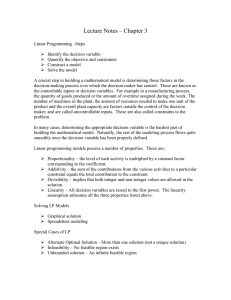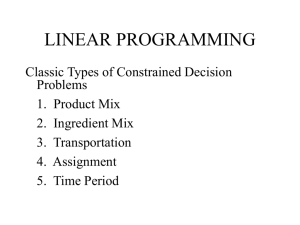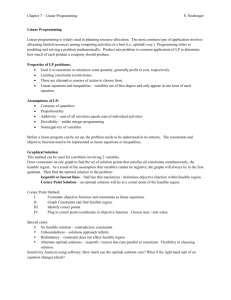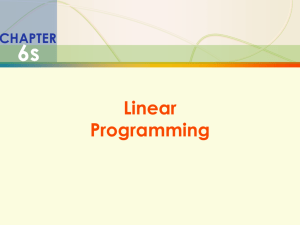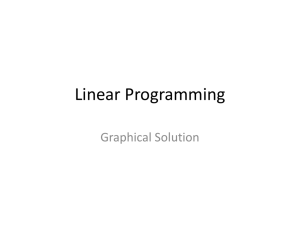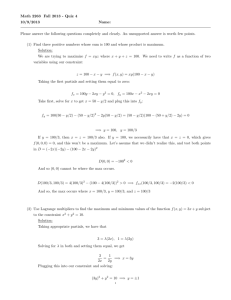ABI_201_Midterm_Notes
advertisement
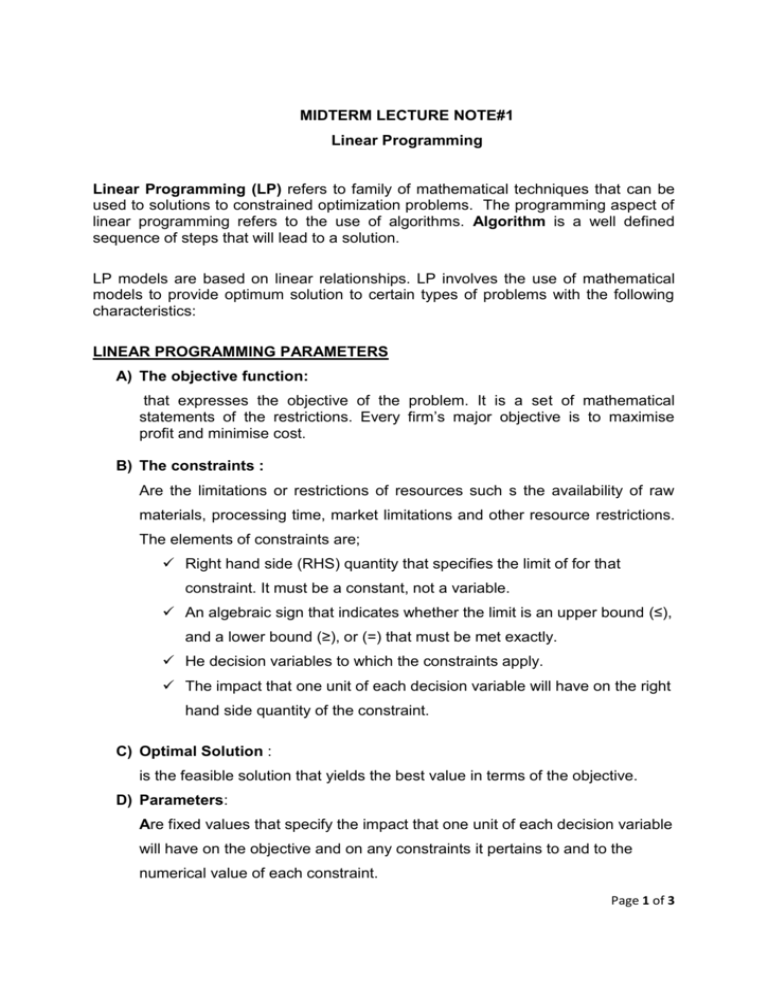
MIDTERM LECTURE NOTE#1 Linear Programming Linear Programming (LP) refers to family of mathematical techniques that can be used to solutions to constrained optimization problems. The programming aspect of linear programming refers to the use of algorithms. Algorithm is a well defined sequence of steps that will lead to a solution. LP models are based on linear relationships. LP involves the use of mathematical models to provide optimum solution to certain types of problems with the following characteristics: LINEAR PROGRAMMING PARAMETERS A) The objective function: that expresses the objective of the problem. It is a set of mathematical statements of the restrictions. Every firm’s major objective is to maximise profit and minimise cost. B) The constraints : Are the limitations or restrictions of resources such s the availability of raw materials, processing time, market limitations and other resource restrictions. The elements of constraints are; Right hand side (RHS) quantity that specifies the limit of for that constraint. It must be a constant, not a variable. An algebraic sign that indicates whether the limit is an upper bound (≤), and a lower bound (≥), or (=) that must be met exactly. He decision variables to which the constraints apply. The impact that one unit of each decision variable will have on the right hand side quantity of the constraint. C) Optimal Solution : is the feasible solution that yields the best value in terms of the objective. D) Parameters: Are fixed values that specify the impact that one unit of each decision variable will have on the objective and on any constraints it pertains to and to the numerical value of each constraint. Page 1 of 3 ASSUMPTIONS OF LP MODELS A) Proportionality : is that each decision variable has a linear impact in the objective function and in each constraint in which it appears. This means that if, the profit of X1 is $4 per unit, and it must be the same, regardless of the quantity of X1. B) Additivity : pertains to potential values of decision variables. It is assumed that non integer values are acceptable. C) Certainty Relates to the model parameter (numerical values). It is assumed that these values are known and constant. All relevant constraints have been identified and represented in the model. Eg: there is a limit on the demand for some item, that limit should be recorded as a constraint (eg: X≤100) D) Non-negativity: negative values of variables are unrealistic and will not be considered in any potential solutions; only positive values and zero will be allowed. X1,X2 ≥ 0 OTHER LP PROPERTIES Binding Constraints – whose intersection determines the optimal solution to a problem. Redundant Constraint – a constraint that does not form a unique part of the boundary of the feasible solution space. The Extreme point Approach – involves finding the coordinates of each corner point that borders the feasible solution space and then determining which corner point provides the best value of the objective function. The highest value for the maximisation problem or the lowest value for the minimization problem. Page 2 of 3 The extreme point theorem states that if a problem has an optional solution, at least one optional solution will occur at a corner point of the feasible solution space. Corner points represent intersections of constraints. Finding the corner points involves finding the coordinates of the constraints. Steps in Formulating LP Models: Define decision variables Determine the objective function Determine the appropriate values for parameters and determine whether an upper limit or lower limit or equality is called for Use this information to build a model Validate the model Page 3 of 3
